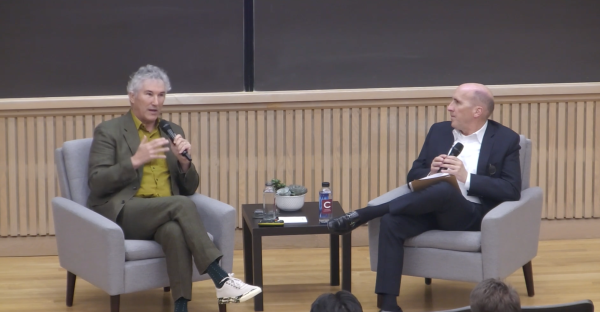National Abolitionist Hall of Fame Inducts Members in Little Hall Ceremony
On Saturday, October 22, the National Abolitionist Hall of Fame (NAHOF) induction ceremony was held in Little Hall to recognize 19th century American abolitionists for their heroic actions. The NAHOF induction ceremony forced participants to open their eyes to the plight of the African American people.
“We are here today to honor the people who were instrumental in changing the moral stance of America on equality by creating the standpoint that all were created equal and from one eternal judge,” Michael Saafir said, a member of the Cabinet of Freedom and a representative of inductee Jermain Loguen.
Saafir went on to suggest that the event was dedicated to all people, not just the inductees, who in some way have “resurrected” change by persisting in their actions through time in order to make a difference in the societal organization of our community today. Saafir proclaimed that we must thank and acknowledge these individuals for all they have sacrificed for our privilege of living in a world in which no racial barriers restrict the path on which we take our lives.
Yet, as this event elucidated the point we’ve reached in society, it also provided us with a “weaving” of the tale of African American history through time. A powerful introductory speech led by Master of Ceremonies Hugh Humphreys left people chanting “amen” fervently.
As the event continued, several acts were performed to exemplify the lives of each of the three unique inductees. The audience was immediately engulfed into the journey that the three abolitionists, Kelley Foster, Jermain Loguen and Gavin Ritchie, went through in order to reach their goals of achieving multiracial acceptance.
Lynne Lydick, who performed a skit modeling inductee Abby Kelley Foster, passionately proclaimed that past African Americans slaves were “beaten raw by mastership” and then forced into captivity like helpless human tools. Lydick served as a testament to the unique mystique the ceremony provided for its audience.
Although not as well known as global figures such as Martin Luther King and Mother Theresa, the audience understood what these three visionaries helped achieve for our generation.
The same university which expelled inductee George Gavin Ritchie for speaking out against racism is now the location of his proud induction into a community of idols.
Ritchie was a student at Madison University (which was later renamed Colgate University) before being expelled for conveying his abolitionist prose to his fellow student body.
“This inauguration symbolizes how each abolitionist persistently stood up for what they believed in and fought against the forces of popular belief at the time,” President of the Worcester Women’s History Project and a representative for inductee Abby Foster, Fran Langille said.
Langille suggests that the ceremony serves to show that minority groups, such as women and African Americans, can in fact advance human rights for all through a constant vigorous pursuit of success. The quest for equality has no boundaries and no limitations.
The NAHOF induction ceremony serves as beacon of hope for further progression in the field of equality in the Chenango Valley and around the world. As suggested by the plethora of speakers at the event, we have come a long way, but there is still work left to be done.
Contact Alan Pleat at apleat@colgate.edu




